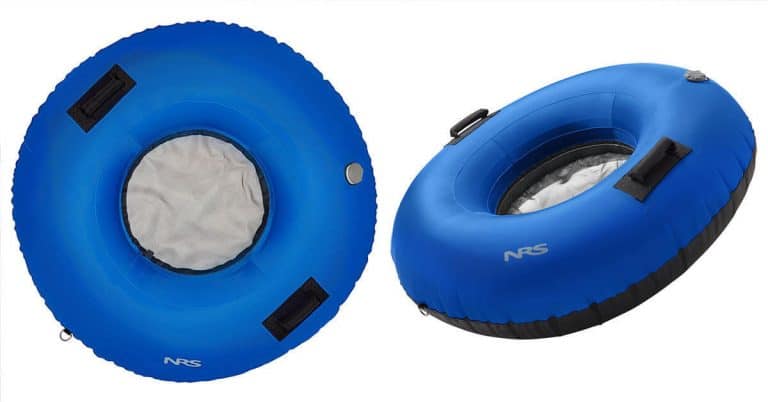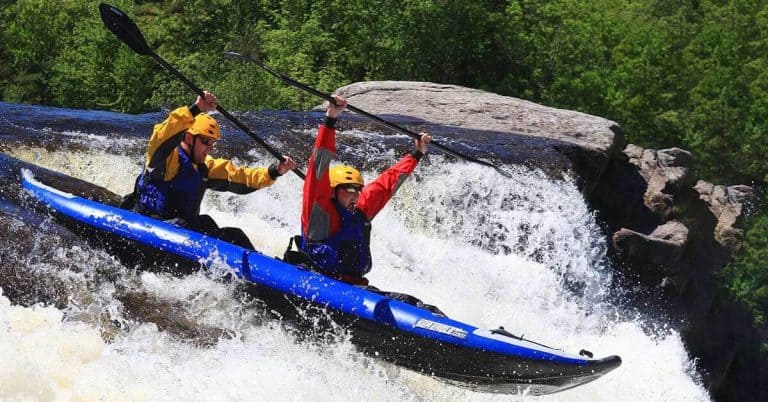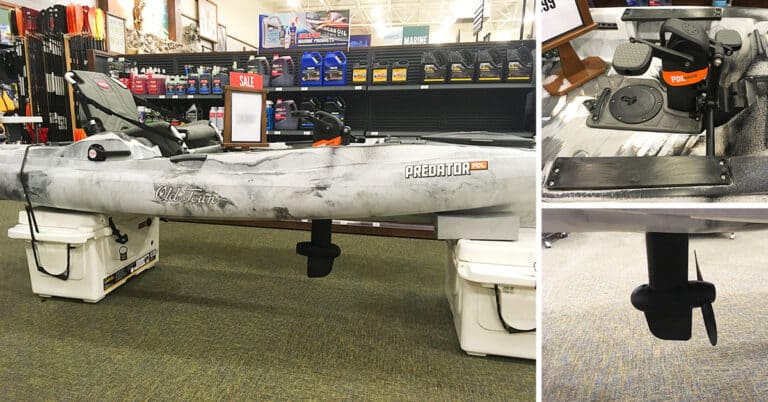Disclosure: I am compensated for purchases made through some links on this site. Click for details.
Wetsuits are tight-fitting suits made from foamed rubber. They are designed to allow a thin layer of water between you and the suit. This water layer in combination with the bubbles in the foamed rubber creates a thermal barrier to keep you warm without the need to wear undergarments.
But most people don’t have the desire to go naked, so here’s what they wear under a wetsuit…
A Quick Guide For What To Wear Under A Wetsuit
Male: boardshorts, swimsuits, swim briefs, diving shorts, bike shorts, rash guards, full-body skinsuits, thermal base layers, or one-piece tri-suit.
Female: one-piece swimsuit, bikini, sports bras, sports underwear, diving shorts, surf shorts, bike shorts, rash guards, full-body skinsuit, thermal base layer, or one-piece tri-suit.
Sport-Specific Gear To Wear Under A Wetsuit
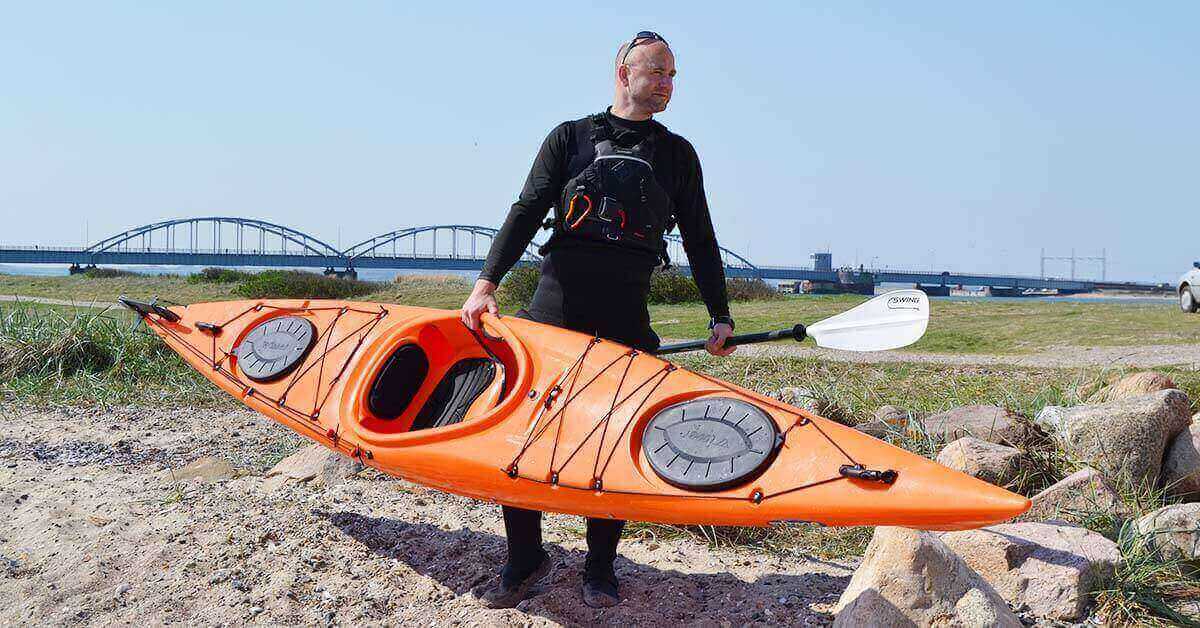
What to wear under a wetsuit depends on the water sport you are participating in, personal preference, comfort, and the quality of your wetsuit and its seams.
For example, you may need to wear a rash guard top and rash guard pants to protect yourself from getting wetsuit rash from the seams in a lower-quality wetsuit. Or the bunching up of boardshorts may be uncomfortable and cause wetsuit rash for some and not others.
People wear wetsuits for many types of watersports and what to wear under a wetsuit for kayaking often differs from what scuba divers wear or those into open water swimming.
Different types of clothes can be worn under a wetsuit, from a swim brief or bikini to a full-body skinsuit for whole-body protection.
Go with whatever works for you under your wetsuit. This depends in part on the temperature of the water, your personal sensitivity to cold, and any chafing your wetsuit causes.
Let’s check out the different clothes men and women wear under wetsuits and the features and advantages of each.
What Men Wear Under A Wetsuit

Men have different options for what to wear underneath a wet suit depending on personal preference, general comfort, warmth, and water activity. Each wet suit underlayer option has its own distinct features yet many of these can be used in almost all watersports and water conditions.
| Kayaking | Paddle Boarding | Scuba Diving | Surfing | Open Water Swimming | Triathlons | |
|---|---|---|---|---|---|---|
| Boardshorts | X | X | X | X | ||
| Swimsuit | X | X | X | X | ||
| Swim Briefs | X | X | X | X | X | |
| Diving Shorts | X | |||||
| Bike Shorts | X | X | ||||
| Rash Guards | X | X | X | X | ||
| Full-Body Skinsuit | X | X | X | X | ||
| Wetsuit Vest | X | X | X | X | ||
| Thermal Base Layers | X | X | X | X | ||
| One-Piece Tri-Suit | X |
Boardshorts
Many wear board shorts under wetsuits. Their disadvantage is the possibility of bunching which can be generally uncomfortable and even risks chafing. Wetsuits are meant to fit snugly. Knots, pockets, and additional fabric expose you to additional seams which can cause chafing as well.
Swimsuit
Swimsuits are also common attire under a wetsuit. Much like boardshorts, there is the risk of bunching and chafing due to bunched-up material and knots that secure the waist of the suit.
Wearing a swimsuit under a wetsuit is common attire.
Swim Briefs
Many who aren’t fans of swimsuits or board shorts opt for swim briefs for warm water diving. Their thin, lightweight material provides a comfortable fit and freedom of movement while providing the appropriate protection for sensitive parts and there’s no bunched-up fabric and exposure to extra seams that might chafe.
Dive Shorts
A pair of Yulex or neoprene diving shorts provide a little extra warmth when it’s cooler, help with the ease of getting in and out of your wetsuit, add extra buoyancy, and won’t bunch up.
Bike Shorts
Like diving shorts, fitted bicycle shorts won’t bunch up on you, they provide freedom of movement and make it easy to get in and out of your wetsuit.
Bike shorts won’t provide the buoyancy or warmth of diving shorts and they are less constricting. Choosing between bike shorts and diving shorts often depends on the water temperature and the type of watersports in which you participate.
Rash Guards
Some wear compression shirts, also known as long-sleeve rash guards or rash vests for protection from chafing. Being made of thin spandex and nylon or polyester material, the extra thermal protection they provide is minimal, they dry quickly, and can offer UV protection when not worn under a wetsuit.
Men’s rash guards come in short-sleeve or long-sleeve, long bottoms, and undershorts too.
Full-Body Skinsuit
Full-body jumpsuits or skinsuits are available in a variety of flexible materials including neoprene or spandex and nylon or polyester. Full-body suits make it a breeze to get into and out of a wetsuit and when worn under a wetsuit they provide protection from chafing and extra warmth.
Tip: To prevent the possibility of the legs riding up, make sure to get a pair with stirrups.
Wetsuit Vest
A wetsuit vest is a great undergarment to wear under a full-length wetsuit for extra upper-body warmth. You can even pair it with a pair of dive shorts.
Thermal Base Layers
Instead of wearing a very thick wetsuit that restricts movement, a thermal base layer under a thinner wetsuit may be more appealing in colder temperatures.
Base layers can provide additional warmth when participating in cold water sports. Their materials vary in both thickness and design and are the only of these undergarments that can markedly improve warmth but the added thickness can also reduce flexibility like the thicker wetsuit.
These layers come in tops, bottoms, and vests. Think about your water sport when choosing a thermal base layer. For instance, vests are less constricting if you are paddling.
One-Piece Tri-Suit
A one-piece tri-suit is designed to be worn through each event of a triathlon. If this is your sport, it is the perfect item to wear under a wetsuit.
What Women Wear Under A Wetsuit
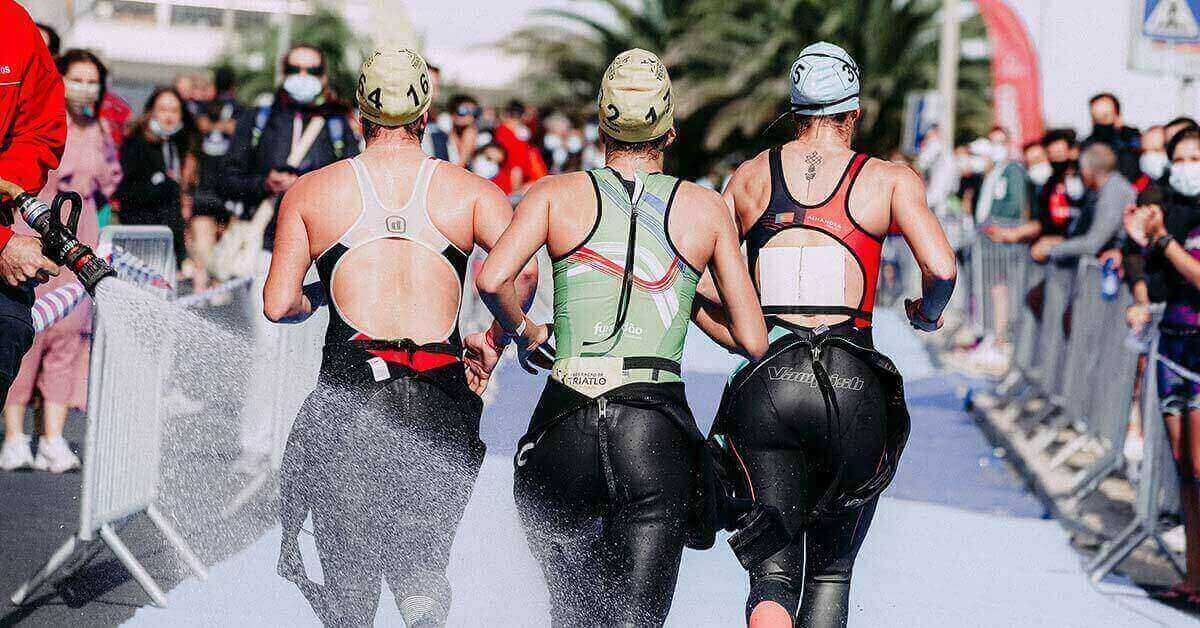
Women have a few additional considerations when picking out comfortable undergarments for a wetsuit. Physique and sensitive areas play a part in picking the appropriate clothes so do comfort, freedom of movement, warmth, watersport, and preference.
Let’s take a look at the clothes women wear under wetsuits and some of the styles of bikinis and sports bras that should be avoided. Each wetsuit underlayer option has its own distinct features yet many of these can be used in most watersports and water conditions requiring a wetsuit.
| Kayaking | Paddle Boarding | Scuba Diving | Surfing | Open Water Swimming | Triathlons | |
|---|---|---|---|---|---|---|
| One-Piece Swimsuit | X | X | X | X | X | |
| Bikini | X | X | X | X | ||
| Sports Bra & Sports Underwear | X | X | X | X | ||
| Diving Shorts & Surf Shorts | X | |||||
| Bike Shorts | X | X | ||||
| Rash Guards | X | X | X | X | ||
| Full-Body Skinsuit | X | X | X | X | ||
| Wetsuit Vest | X | X | X | X | ||
| Thermal Base Layers | X | X | X | X | ||
| One-Piece Tri-Suit | X |
One-Piece Swimsuit
A one-piece bathing suit protects sensitive parts, forms to the body in all the right places, it’s not likely to bunch up, and resists shifting when putting on and taking off a wetsuit.
Since wetsuits fit snuggly against the skin, simple one-piece swimsuits or athletic styles are best. Decorative features and knots can press into and chafe your skin.
Avoid strapless suits too. They can be pulled down when wiggling out of your wetsuit.
Bikini
Athletic, workout, surf, and other bikinis work great under a wetsuit as long as they don’t have fasteners, knots, or other decorative features that will cause pressure points and rub under the wetsuit.
Sports Bra & Sports Underwear
Sports bras and sports underwear suitable for swimming are great for wearing under a wetsuit whereas regular underwear and bra will be uncomfortable. They are typically thicker than a bikini and offer greater support.
Avoid sports bras that use heavy molded or padded cups. This excess material will hold water and have a higher risk of chafing.
Also, avoid bras with closures that cause uncomfortable pressure points under the wetsuit.
Diving Shorts & Surf Shorts
Diving shorts and surf shorts made of Yulex or neoprene won’t bunch up or shift under a wetsuit, add little extra buoyancy, and provide a bit of extra warmth on those cold water days. The materials also ease getting in and out of a wetsuit.
If you don’t know the difference between diving shorts and surf shorts, diving shorts are longer, thigh-length shorts.
Bike Shorts
Like diving shorts, fitted bicycle shorts won’t bunch up on you, they provide freedom of movement and make it easy to get in and out of your wetsuit.
Bike shorts won’t provide the buoyancy or warmth of diving shorts and they typically won’t last as long. They are, however, cheaper and a bit less constricting. Choosing between the two types of shorts often depends on the water temperature and the type of watersports in which you participate.
Rash Guards
A rash guard or rash vest offers protection from chafing. This thin spandex and nylon or polyester top provides minimal thermal protection, dries quickly, and offers UV protection when not worn under a wetsuit.
Your choice of rash guard should be tight and absent of zippers that can cause chafing and discomfort under your wetsuit.
Full-Body Skinsuit
A full-body jumpsuit or skinsuit worn under a wetsuit provides full-body protection from chafing while providing extra warmth. These suits are available in a variety of flexible materials including neoprene or spandex and nylon or polyester.
Full-body skinsuits make it easy to get into and out of a wetsuit and pairs with stirrups keep the legs from riding up and bunching at the knee or crotch.
Wetsuit Vest
A wetsuit vest can be layered under a full-body wetsuit to keep the upper body warm and can easily be layered with other undergarments.
Thermal Base Layers
Thermal base layers worn under a wetsuit can provide additional thermal insulation when participating in cold water sports. They vary in both thickness and design and are the only of these garments that can markedly improve warmth but with thickness comes reduced flexibility.
They come in tops, bottoms, and vests. Vests are less constricting if you need an extra layer while paddling.
One-Piece Tri-Suit
A one-piece tri-suit is designed to be worn through each event of a triathlon and is a great undergarment for women to wear under a wetsuit.
Wearing Nothing Under A Wetsuit

It is perfectly acceptable to wear nothing under your wetsuit. Clothes can be uncomfortable under a wetsuit. They can wrinkle up under your wetsuit and even cause wetsuit rash. It really comes down to a matter of personal preference, hygiene, and public decency.
Here are some factors to consider before going naked under your wetsuit:
- Location: There is an issue to overcome if you plan to be naked under your wetsuit. Where will you be putting on and taking off your wetsuit? Public indecency is a serious crime that comes with the possibility of jail time.
- Wetsuit Rash: Wetsuit rash is chafing from your wetsuit. Your wetsuit may cause chafing or maybe the clothes you are wearing underneath your wetsuit. The best choice for you will be a matter of comfort. For more, see How To Prevent Wetsuit Rash.
- Rent vs. Own: Do you own your wetsuit or will you be renting? For hygienic purposes, wear something under a wetsuit if the suit is not yours. There are people who pee in wetsuits, have STDs, or have contagious skin conditions.
- Weather: What are you going to do if you get too hot in your wetsuit? Men can come out of the top portion of the wetsuit but women don’t always have the same advantage.
- Water Temperature: Yes, it’s nice to have the right wetsuit for different water temperatures but water temperatures often vary. The use of clothes under your wetsuit like a thermal base layer can help keep you warm in cold water or remove it in warm water.
Conclusion
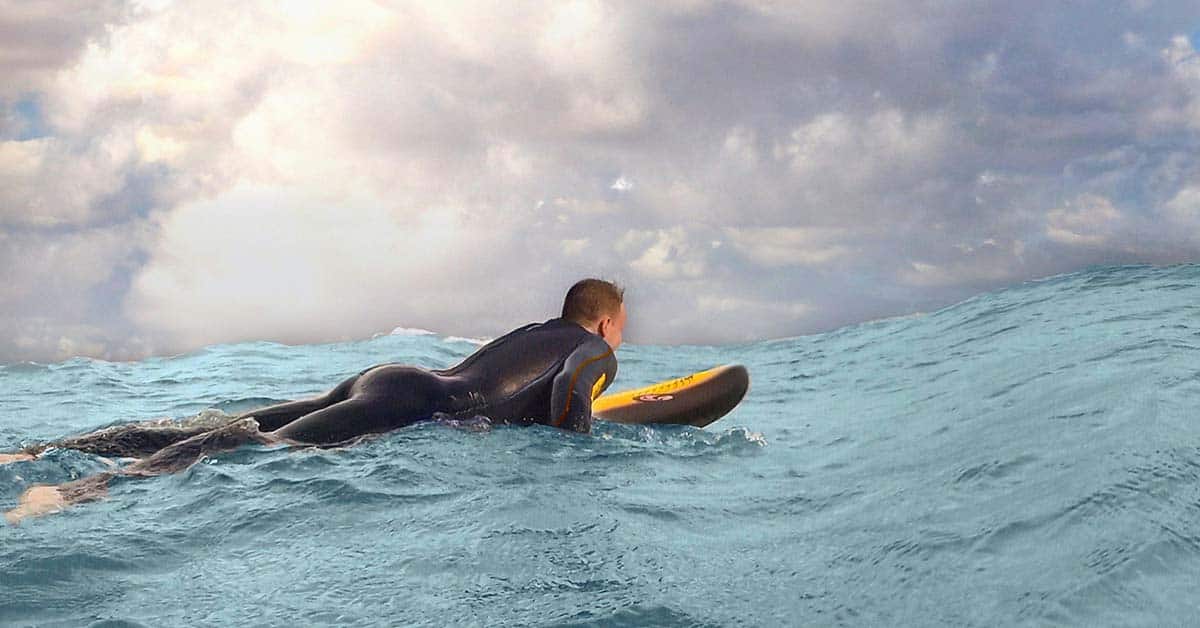
There are a plethora of varieties and styles of clothes that can be worn under a wetsuit. The garments best for you will be dependent on your watersport, your personal preference, and the temperatures of the waters you will be in.
If you are into paddling, check out What Do You Wear When Kayaking In Cold Water? for more clothing options. Wetsuits aren’t the only way to keep warm out there on the water.

